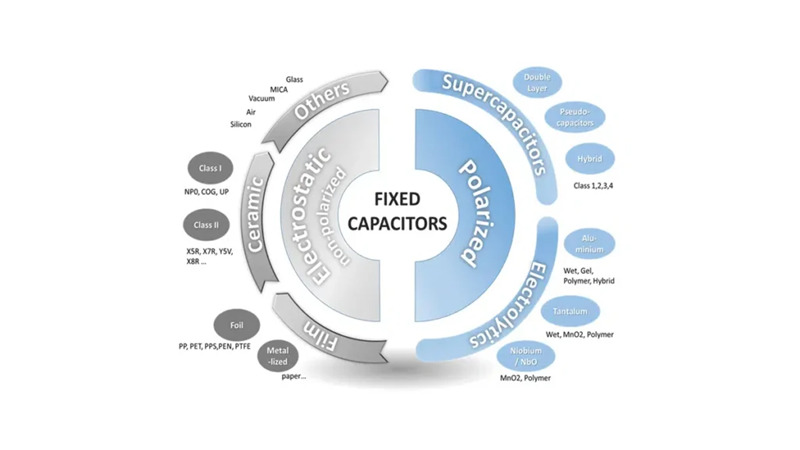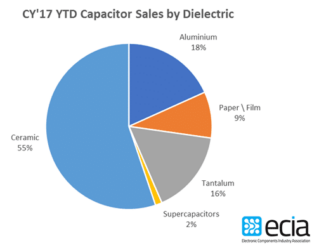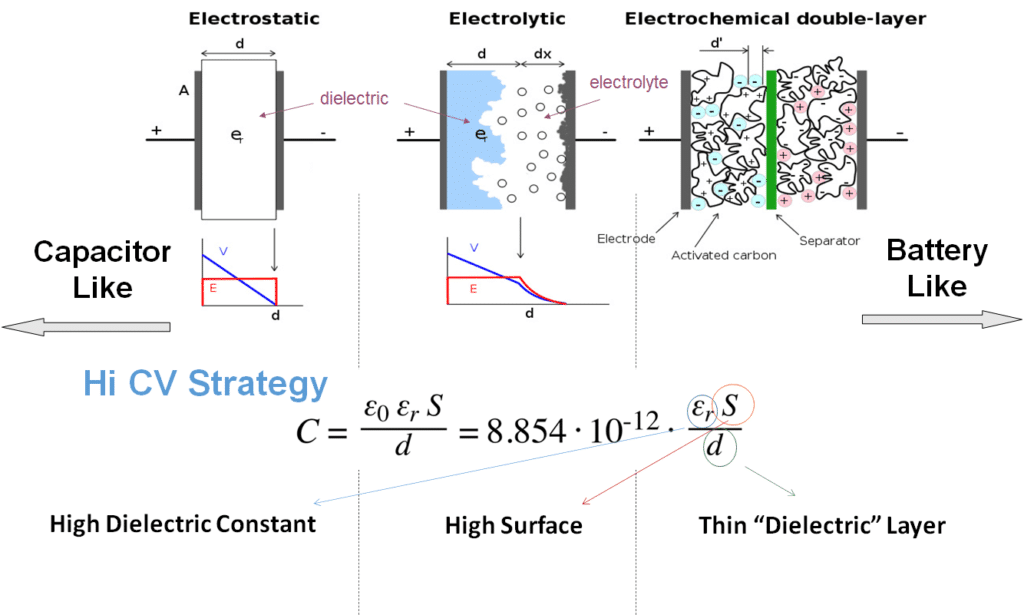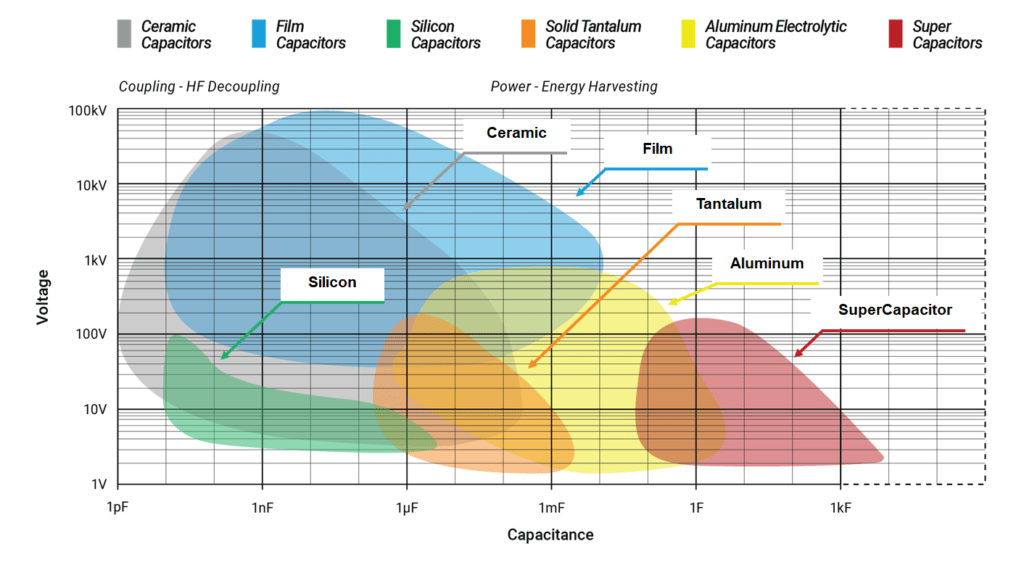The article provides a concise examination of various capacitor technologies, highlighting their distinct characteristics and applications. It categorizes capacitors into three primary groups: electrostatic capacitors, electrolytic capacitors, and supercapacitors. Each category is analyzed based on its construction, performance attributes, and suitability for specific voltage and capacitance ranges. This comprehensive overview serves as a valuable resource for understanding the diverse landscape of capacitor technologies and their roles in electronic circuits.
There are multiple views possible on how to sort and split capacitor technologies. The major group of fixed (non-variable) capacitors can be divided into two groups depending on whether the capacitors are polarized (with positive and minus negative electrodes) or non-polarized. Non-polarized capacitors are closer to a simple capacitor model M-I-M (metal – insulator – metal) dominated by electrostatic charge storage, and thus it can also be called “electrostatic” capacitors. See Figure 1 chart fix capacitor types.

Figure 1. fixed capacitor types, source: EPCI
Ceramic capacitors are leading miniaturization, downsizing, and dominating the market share. The right charts are based on sales VALUE, but if we have these charts in sales VOLUME, ceramic capacitors will occupy up to 80% of the market share of all capacitors made; on the other hand, more expensive tantalum capacitors would shrink their share in volume terms. The biggest dynamic exhibits supercapacitors, its market share in 2015 was negligible, while the 2017 share reached 2% and continues to grow.
Capacitor Technologies
We can split fixed capacitor technologies further into three main groups that substantially differ in their construction and features:
- Electrostatic Capacitors
- Electrolytic Capacitors
- Supercapacitors (electrochemical capacitors)

Figure 2. capacitor technologies value market share in 2017; source: ECIA

Figure 3. capacitor technologies comparison; source: EPCI

Figure 4. Capacitor technology capacitance versus voltage capabilities; source: EPCI
Resource: Passive components Blog
